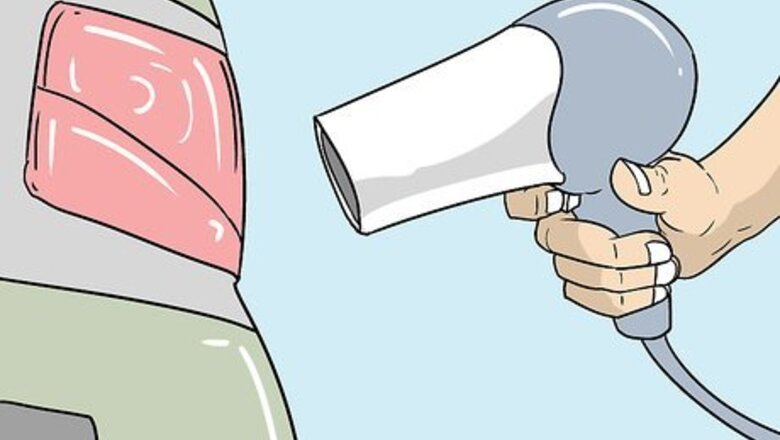
views
Removing Moisture with a Hair Dryer
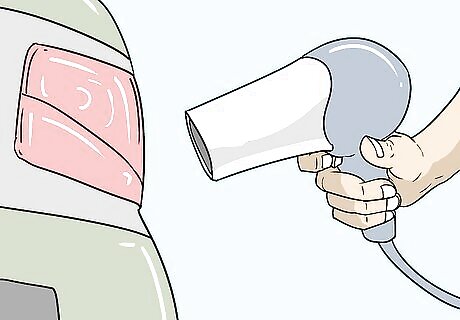
Try warming the outside of the light with a hair dryer. You can usually get rid of condensation without taking apart your tail light. Hold your hair dryer about 6 inches (15 cm) away from your tail light and turn it on the lowest setting. Move the hair dryer back and forth so you don’t focus on one spot for too long. As you heat up the water, it will evaporate and escape out from the vent in the back of the light. You can also use a heat gun if you don’t have a hair dryer. If there’s water pooling in your headlight, applying heat externally will not be enough to make it all evaporate.

Disconnect your tail light from your vehicle if there’s still condensation. Open your vehicle’s trunk and look for screws or bolts directly behind your tail light. Use a screwdriver or wrench to loosen the tail light from your vehicle. Carefully pull it straight out from your vehicle. Look for a large square connector on the wires coming out from the back, and disconnect it to detach your tail light completely. If you don’t know how to take out your tail light, consult with your vehicle’s manual or take it to a mechanic.
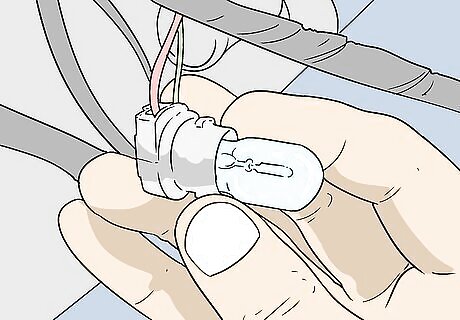
Unscrew the bulb to drain the water from the housing. Look for the large circular screw or cap on the backside of the light’s housing. Turn the cap counterclockwise by hand until it comes loose. Slowly pull the cap and bulb straight out from the housing so it doesn’t get damaged. Tilt the housing upside down and pour the excess water out from the hole.Warning: Be careful not to touch the bulb glass with your bare hands since you could cause the light to die prematurely.

Cut a hole in a cardboard box that’s the same size as the hair dryer nozzle. Choose a cardboard box that’s large enough to fit the tail light housing inside. Hold the end of your hair dryer against the side of the box about 2 inches (5.1 cm) up from the bottom near one of the corners. Trace around the hair dryer’s nozzle and carefully cut out around the outline with a utility knife. The box will help trap the heat so the water evaporates more quickly. Avoid cutting the hole larger than the hair dryer’s nozzle, or else the heat will escape out of the box.

Put the tail light in the opposite corner of the cardboard box. Use the corner of the box that’s across from the hair dryer so you don’t damage your light. Position the tail light so the bulb hole faces the hair dryer’s nozzle. You can put your light horizontally or vertically in the box.
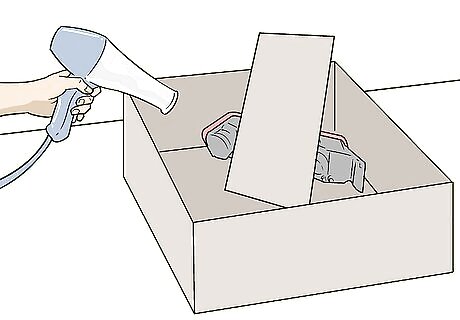
Position a piece of cardboard between the hole and the tail light. Direct heat can melt or damage your tail light, so cut a scrap piece of cardboard that’s tall enough to stand up in the box. Set the cardboard vertically between your hair dryer and tail light so it blocks the heat. It’s okay if you leave open space on the sides of the cardboard as long as the nozzle isn’t pointed right at the light.
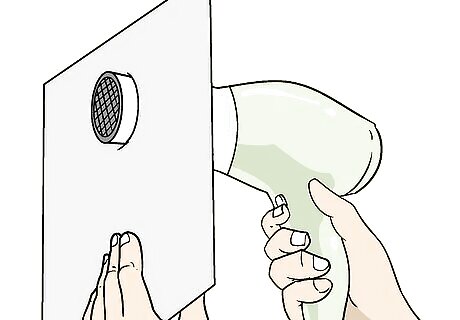
Stick the hair dryer nozzle into the hole in the box. Push the end of the nozzle into the hole you cut earlier. Make sure the sides of the nozzle press tightly against the edge around the hole so air doesn’t leak out from the box.

Turn the hair dryer on the lowest setting for 5 minutes. Set your hair dryer onto the lowest setting and close the top of the box as tightly as you can. Stay nearby while the hair dryer runs, but leave the box closed so heat doesn’t escape. After 5 minutes, turn off your hair dryer and open the box to check if your light is dry. If you still see condensation, run the hair dryer for another 5 minutes. The tail light housing may be hot to the touch, so be careful when you grab it. Use an oven mitt or a thick work glove to grab it if you need to.Warning: Never leave your hair dryer unattended since it could start a fire.
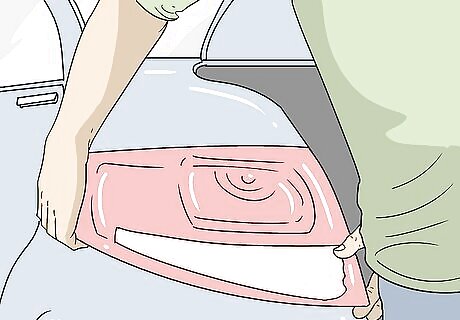
Reassemble your tail light to install it back on your vehicle. Feed the light bulb back into the housing and screw the cap clockwise to secure it. Plug the wire connector back into the tail light and carefully push the cords into your vehicle. Position your tail light so the bolt or screw holes line up and hold it in place so you can screw it back in. Start your vehicle’s battery and turn on your tail lights to make sure they work properly. If they don’t, try taking apart the tail lights again to check the wire connections.
Preventing Condensation
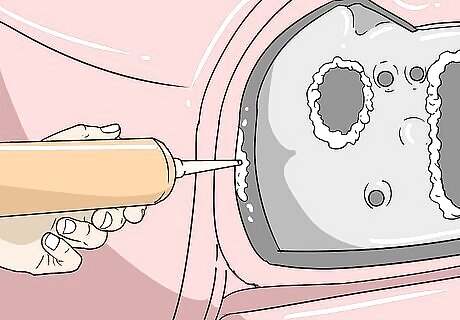
Caulk around the seams to prevent water from leaking in. Use a clear silicone caulk to ensure that it’s waterproof and won’t affect your visibility. Hold the nozzle against the seam going around the edge of the clear plastic casing. Pull the trigger on the caulk gun to place a bead all the way around the seam. Push the caulk into the seam with your finger and allow it to dry for about 30 minutes to keep moisture locked out. Only seal the tail light once it’s completely dry, or else you may trap moisture inside.Variation: You can also use silicone caulk to fill in cracks or holes in your tail light if you need to make a quick repair. Otherwise, water can easily leak into the light.
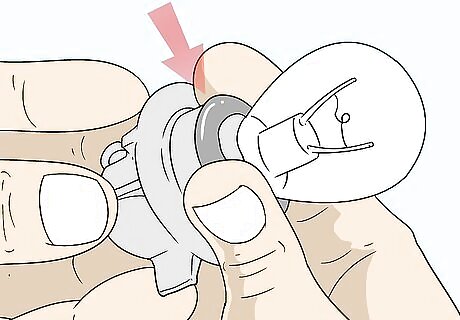
Replace the O-ring around the bulb if it’s damaged. The O-ring is a circular rubber gasket on the bulb cap that prevents water from leaking inside. Remove your tail light from your vehicle and unscrew the circular bulb cap. Inspect the O-ring and replace it if you find any cracks. You can buy O-rings from automotive or hardware stores.
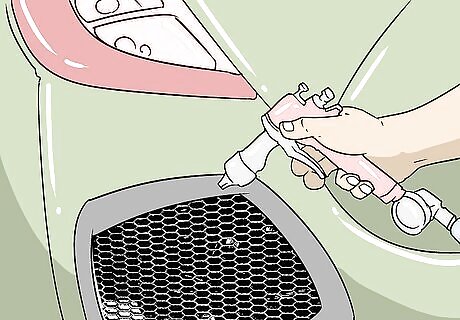
Spray the vents with compressed air to unblock them. The backs of your tail lights will usually have small plastic tubes near the bottom or top so air can cycle in and out of them. Get a can of compressed air and stick the nozzle into the tail light’s vent. Press down on the compressed air’s button using short bursts to spray out any dust or dirt that’s stuck inside. Check your vehicle's manual if you have trouble locating the vents on your tail lights. If the vents get clogged, moisture that’s trapped inside your lights won’t be able to escape.




















Comments
0 comment